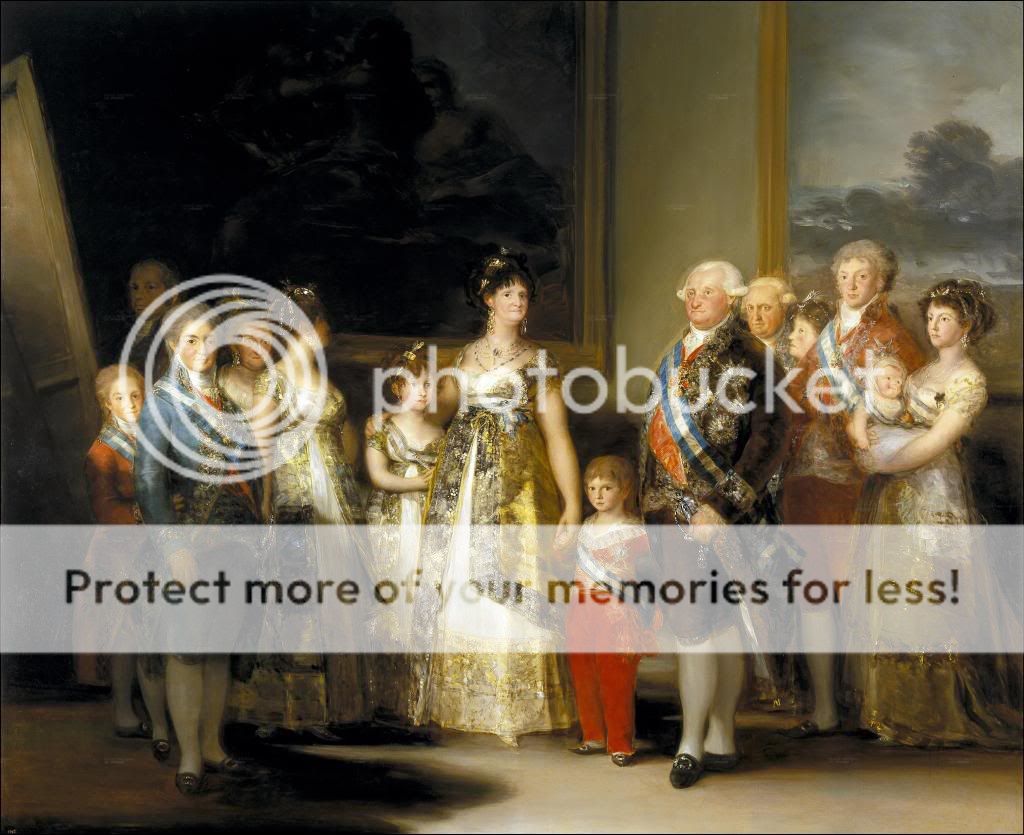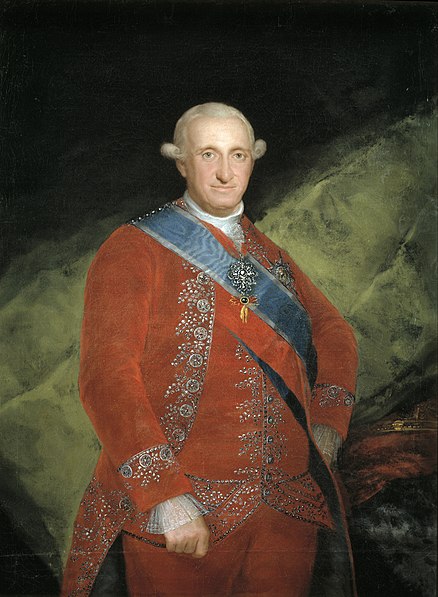- Joined
- Aug 13, 2004
- Messages
- 27,115
- City
- São Paulo
- Country
- Brazil
Carlos IV Antonio Pascual Francisco Javier Juan Nepomuceno José Januario Serafin Diego, King of Spain (Portici, 11 November 1748 - Naples, 19 January 1819); married in San Ildefonso on 4 September 1765, Princess Maria Luisa of Bourbon-Parma (Parma, 9 December 1751 - Rome, 2 January 1819)
Reign: 1788 - 1808
Dynasty: Bourbon
Predecessor: King Carlos III of Spain
Succeeded by: King Jose I of Spain
Children: Prince Carlos of Spain, Queen Carlota Joaquina of Portugal, Princess Maria Luisa, Princess Maria Amalia and Prince Carlos of Spain, Duchess Luisa of Parma, Queen of Etruria; Prince Carlos and Prince Felipe of Spain, King Fernando VII of Spain, Prince Carlos of Spain, Count of Molina; Queen Maria Isabel of the Two Sicilies, Princess Maria Teresa, Prince Felipe and Prince Francisco de Paula of Spain, Duke of Cadiz
Parents Carlos: King Carlos III of Spain and Princess Maria Amalia of Saxony
Parents Maria Luisa: Duke Filippo of Parma, Piacenza and Guestalla, Prince of Spain and Princess Elisabeth of France
Siblings Carlos: Princess Maria Isabel, Princess Maria Josefa, Princess Maria Isabel and Princess Maria Josefa of Spain, Empress Maria Luisa of Austria, Prince Felipe of Spain, Duke of Calabria; Princess Maria Teresa and Princess Maria Ana of Spain, King Fernando IV of the Two Sicilies; Prince Gabriel, Prince Antonio and Prince Francisco of Spain
Siblings Maria Luisa: Empress Isabel of Austria and Duke Ferdinando of Parma, Piacenza and Guestalla
Reign: 1788 - 1808
Dynasty: Bourbon
Predecessor: King Carlos III of Spain
Succeeded by: King Jose I of Spain
Children: Prince Carlos of Spain, Queen Carlota Joaquina of Portugal, Princess Maria Luisa, Princess Maria Amalia and Prince Carlos of Spain, Duchess Luisa of Parma, Queen of Etruria; Prince Carlos and Prince Felipe of Spain, King Fernando VII of Spain, Prince Carlos of Spain, Count of Molina; Queen Maria Isabel of the Two Sicilies, Princess Maria Teresa, Prince Felipe and Prince Francisco de Paula of Spain, Duke of Cadiz
Parents Carlos: King Carlos III of Spain and Princess Maria Amalia of Saxony
Parents Maria Luisa: Duke Filippo of Parma, Piacenza and Guestalla, Prince of Spain and Princess Elisabeth of France
Siblings Carlos: Princess Maria Isabel, Princess Maria Josefa, Princess Maria Isabel and Princess Maria Josefa of Spain, Empress Maria Luisa of Austria, Prince Felipe of Spain, Duke of Calabria; Princess Maria Teresa and Princess Maria Ana of Spain, King Fernando IV of the Two Sicilies; Prince Gabriel, Prince Antonio and Prince Francisco of Spain
Siblings Maria Luisa: Empress Isabel of Austria and Duke Ferdinando of Parma, Piacenza and Guestalla
Last edited:



